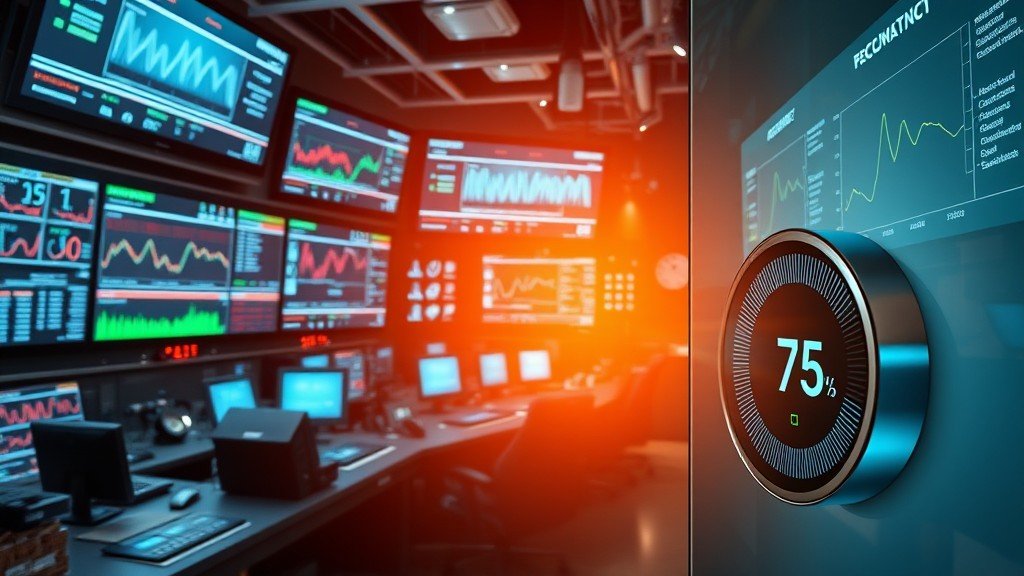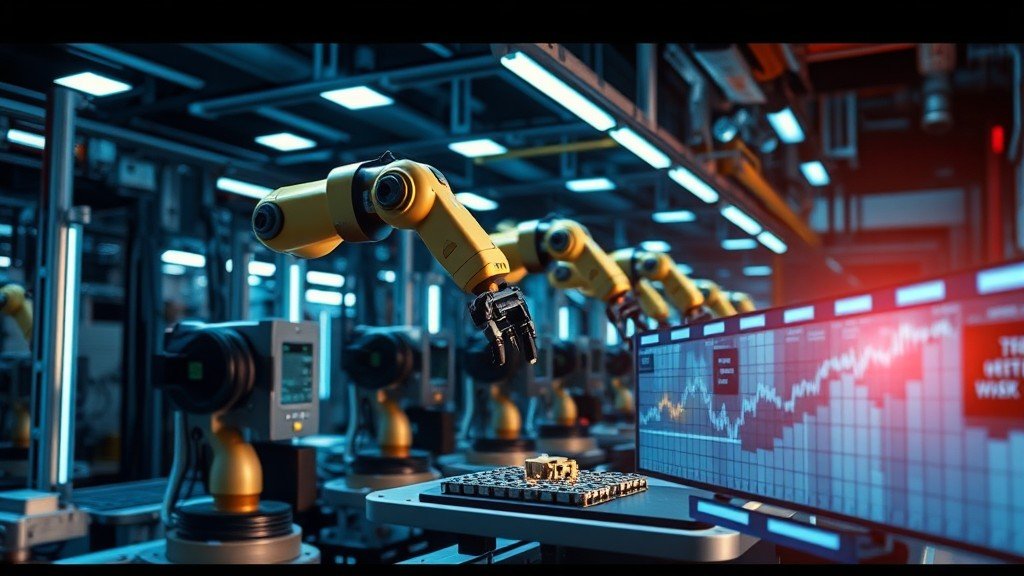Precision is very important in RTC, or Real-Time Control systems. These systems need to respond quickly and accurately to keep everything running smoothly. When precision is off, it can cause big problems.
For example, think about a robot that has to move exactly where you want it. If it’s not precise, it might miss the target! Keep reading to find out why precision is key in keeping track of time and ensuring everything works as it should. You’ll learn how accuracy helps systems function properly and prevents mistakes.
Key Takeaway
- Precision helps systems respond quickly to changes.
- Accurate time means better performance in many tasks.
- High precision reduces mistakes and improves quality.
Precision in RTC Systems
Credits: Maxim Integrated
Precision in an RTC system refers to how quickly and accurately it can respond to changes. Here’s why this is important:(1)
- Fast Reactions: The system must respond quickly to events, which means low latency—essentially, no delays.
- Safety Matters: If the system is slow, it could lead to failures. For instance, in a car’s anti-lock brakes, a delay might result in an accident.
- Protecting People: A precise RTC enhances safety by reacting quickly and accurately when needed.
In summary, precision involves not only accuracy but also the speed of response when it matters most.
Enhanced Accuracy in Real-Time Control

Accuracy is very important in RTC systems. It means what the system does matches what it should do. Here are some ways systems achieve accuracy:
- Self-Checking Methods: Systems use smart ways to check and fix their actions.
- PID Control: One common method is Proportional-Integral-Derivative (PID) control. This helps the system stay on track by correcting any mistakes.
- Smart Thermostats: For example, a smart thermostat keeps adjusting to make sure the room temperature is just right. This shows accuracy in action!
Precision and accuracy are key for RTC systems. Quick responses and correct actions keep systems safe and effective. By using smart methods, these systems can provide reliable control in real-time situations.
Improving System Performance
When RTC system are precise, they can handle changes much better. Here’s how precision helps:
- Better Performance: Precise systems keep working well, even when unexpected things happen.
- High-Precision Tools: Tools like Analog-to-Digital Converters (ADCs) measure things accurately. This helps the system react quickly to changes without losing control.
- Balance Like a Tightrope Walker: It’s like a tightrope walker who stays balanced perfectly, even when the wind blows.
Precision in RTC systems leads to better performance and stability in different situations.
Quality Assurance with Real-Time Monitoring
In factories, precision is very important for making sure products are high quality. Here’s how RTC systems help with this:
- Monitoring Production: RTC systems can closely watch the production process. They catch mistakes right away.
- Fixing Problems Quickly: If something goes wrong, the system can fix it before too many products are made. This helps save money.
- Reducing Waste: By catching errors early, these systems help reduce waste in production.
Think of it like a chef who tastes the soup while cooking to make sure it’s just right. That’s how RTC systems work to keep everything perfect! With real-time monitoring, they help ensure high-quality products and improve overall performance.
Automation and Efficiency in RTC Systems
Many RTC systems can operate on their own. They use smart methods to solve problems without needing help from people. Here’s how this works:
- Self-Management: These systems can keep running and adapt to changes quickly.
- Speed and Accuracy: When systems are precise, they work faster and make fewer mistakes.
- Robotic Efficiency: Imagine a robot that builds cars. The more precise it is, the quicker it can finish the job without errors.
Automation in RTC systems boosts efficiency and helps them perform better in various tasks.
Applications Across Different Industries
Precision in RTC systems is important in many areas. Here are some key applications:
- Manufacturing: In factories, it helps with automated assembly lines, making production faster and more reliable.
- Automobiles: In cars, precise systems make anti-lock brakes work effectively, ensuring safety on the road.
- Healthcare: Medical devices rely on accuracy to perform tasks correctly. For example, devices that monitor health must be very precise.
Every industry benefits from having precise control systems. Just like a watch needs to keep accurate time, these systems need to track their tasks accurately. By ensuring precision, RTC systems help improve efficiency and quality across various fields.(2)
Feedback Mechanisms for Continuous Improvement
Feedback loops are very important for RTC systems. They help the system check how it’s doing and make adjustments. Here’s how feedback works:
- Self-Correction: If a sensor measures something incorrectly, the system can fix itself.
- Learning Process: This is like a student who checks their homework for mistakes. They learn and improve with each check.
- Better Performance: The better the feedback, the better the overall performance of the system.
Feedback helps RTC systems grow and become more effective over time.
Enhanced Throughput and Productivity
Being precise can help systems do more work in less time. Here are some examples of this:
- Aerospace Industry: In aerospace, more precision means faster production of aircraft. This is very important for making things quickly and accurately.
- Baking Cookies: It’s like a baker who can make a dozen cookies in the same time it takes to bake just one! Precision allows for high productivity.
Precision leads to higher throughput and better productivity in various fields.
Deterministic Performance in Critical Applications
Certain tasks require precise timing to ensure everything operates smoothly. RTC systems must consistently perform on schedule. This consistency is known as deterministic performance. Here’s why it holds significance:
- Medical Devices: In hospitals, medical devices must function accurately to protect patient safety. Any delay or error can have serious consequences.
- Traffic Lights: Consider a traffic light that changes colors at the exact right moment. This timing is crucial for keeping both vehicles and pedestrians safe on the road.
By implementing feedback systems, enhancing productivity, and maintaining strict timing, RTC systems can effectively operate in various critical areas. This reliability allows them to meet the demands of their tasks consistently.
Conclusion
Precision plays a crucial role in RTC systems. It guarantees fast responses, accurate outputs, and improved quality across different applications. As technology progresses, the demand for precise control will continue to rise. This makes it essential for achieving better performance and ensuring safety in critical tasks.
FAQ
How does an RTC keep accurate time even in sleep mode?
An RTC, or real-time clock, can keep track of the current time even when your device is in sleep mode. It does this because it runs on a battery and uses very little power. This low power design allows it to work quietly in the background. With the help of a crystal oscillator, the RTC provides accurate time without draining the battery, so when you wake up your device, the time is still correct.
Why is time synchronization important for real-time applications?
Time synchronization is really important for real-time applications because it makes sure all devices show the same local time. If devices aren’t synced, they might get out of step, causing delays or mistakes in data processing. By using an NTP server, devices can stay in sync and maintain second precision. This is crucial for systems that need high precision and reliable communication between devices.
What role do atomic clocks play in achieving high precision for RTCs?
Atomic clocks are super accurate and can keep time within tiny fractions of a second. They are used in advanced RTCs to improve their accuracy, especially in situations where precision is essential. These clocks work well across different temperature ranges, making them perfect for critical systems that need to keep time perfectly. By using atomic clock technology, RTCs can maintain accurate time even when conditions change.
How does a crystal oscillator help an RTC stay accurate?
A crystal oscillator is vital for an RTC because it produces a steady signal that helps keep track of time. Most RTCs use a 32.768 kHz frequency from the oscillator to count seconds. The better the oscillator’s precision, the more accurate the RTC will be. This means that even if temperatures change or other factors vary, the RTC can still provide reliable and accurate timekeeping.
What are the benefits of using a battery-powered RTC in electronic devices?
Battery-powered RTCs have several benefits. First, they can keep track of time even when the main power is off, which is great for devices that need to remember the current time. They also use very little power, which helps extend battery life in portable gadgets. This way, when you turn on your device, you can always see the correct time right away, which is important for many everyday tasks.
References
- https://www.golledge.com/using-rtc-modules-for-accurate-timekeeping-in-embedded
- https://hackaday.com/2020/09/30/choosing-the-right-rtc-for-your-project/


